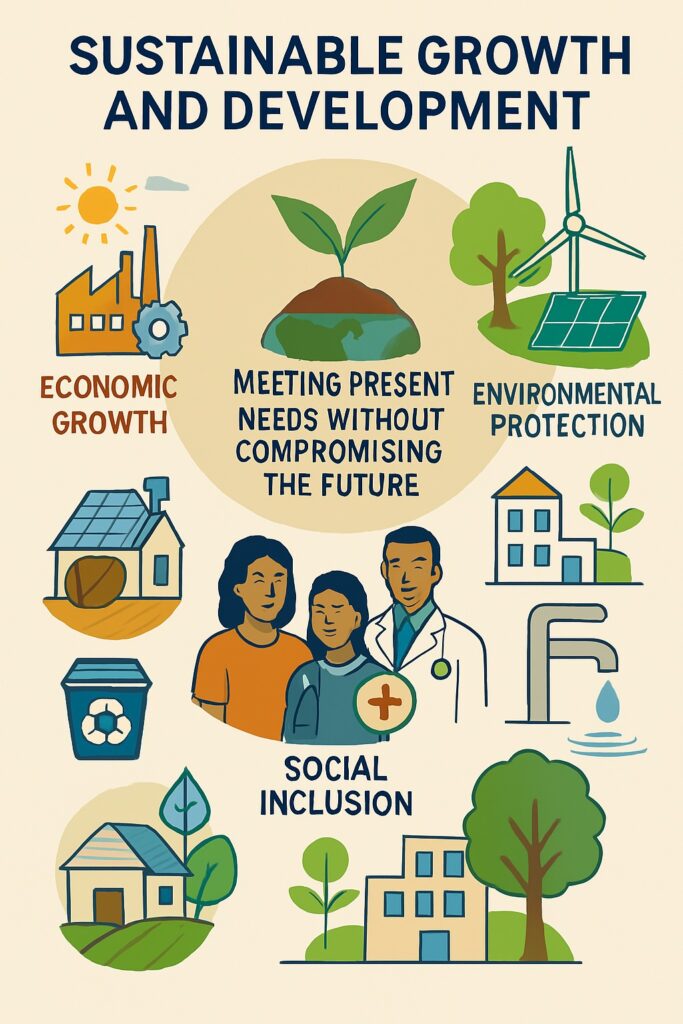Sustainable growth and development refers to a model of economic growth that balances economic, social, and environmental considerations. This model of growth seeks to ensure that economic progress is achieved in a way that does not compromise the ability of future generations to meet their own needs.

The concept is rooted in the idea that economic, social, and environmental considerations are interdependent and must be balanced in order to achieve long-term prosperity. This approach to growth and development is in contrast to traditional models that prioritize economic growth at the expense of social and environmental considerations.
Table of Contents
Components of Sustainable Growth and Development
- Economic Growth: Economic growth is a key component of it. This includes the expansion of the economy through the creation of new jobs and the increase of income for individuals and businesses.
- Social Equity: Social equity is another important component of it. This includes ensuring that the benefits of economic growth are shared among all members of society, regardless of race, gender, or socio-economic status.
- Environmental Protection: Environmental protection is a critical component of its component. This includes measures to reduce the impact of human activities on the environment, such as reducing greenhouse gas emissions, conserving natural resources, and protecting biodiversity.
Challenges of Sustainable Growth and Development
- Balancing Economic and Environmental Considerations: One of the biggest challenges is balancing economic and environmental considerations. This can be difficult because economic growth often relies on the use of natural resources and the release of pollutants, which can have negative impacts on the environment.
- Addressing Social Inequities: Another challenge of sustainable growth and development is addressing social inequities. This includes ensuring that the benefits of economic growth are shared equally among all members of society, regardless of race, gender, or socio-economic status.
- Meeting the Needs of Future Generations: A key challenge of sustainable growth and development is meeting the needs of future generations. This requires balancing economic, social, and environmental considerations in a way that ensures that the planet remains habitable and that future generations have access to the resources they need to meet their own needs.
Ways to Achieve Sustainable Growth and Development
- Promoting Renewable Energy: One way to achieve sustainable growth and development is by promoting renewable energy. This includes the use of solar, wind, and hydro power, which are cleaner and more sustainable sources of energy than fossil fuels.
- Encouraging Sustainable Agriculture: Another way to achieve this is by encouraging sustainable agriculture. This includes practices that conserve natural resources, reduce greenhouse gas emissions, and promote biodiversity.
- Investing in Education and Training: Investing in education and training is another key way to achieve it. This includes providing individuals with the skills and knowledge they need to contribute to the economy and participate in sustainable practices.
Conclusion
In conclusion, the concept is critical to ensuring long-term prosperity for all. By balancing economic, social, and environmental considerations, we can achieve economic growth in a way that does not compromise the ability of future generations to meet their own needs.
Whether through promoting renewable energy, encouraging sustainable agriculture, or investing in education and training, there are many ways to achieve sustainable growth and development. It is up to each of us to play a role in creating a more sustainable future.
Read: Geography Notes